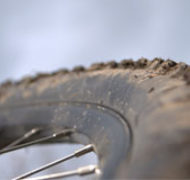The Miracle You Can Have Every Day, Part 2: Exercise, Anxiety, and the Brain
Blog / Produced by The High Calling
This week, my brand-new MacBook Air died. It took three big projects with it, as well as software that had already been complaining about being loaded too many times. My mother-in-law had knee surgery and is in terrific pain. The living room is a mess of books. (My older daughter was the number-one patron of our local library last year, and I have the library fines to prove it. Speaking of fines, we currently owe $33 and are temporarily blocked from our account, which has the nice side benefit of preventing us from logging in so we can see the literary sources of our delinquency).
I could go on about leaks, an electric switch that was smoking, the flat tire, the clogged drain (and me doing dishes in the back yard), and the fact that my daughter just made a sundial to help me tell time, because the stove unilaterally switched over to military time. Or I could just say this: with all these things picking away at me, I feel anxious!
Anxiety is actually a natural reaction that sharpens our attention so we can meet challenges. However, clinical anxiety— in the form of generalized, social, phobias and panic attacks, can be crippling. Forget about feeling picked at. Think emotional-fetal-position (or even, in some cases, physical-fetal-position).
Clinical anxiety affects about 18 percent of the population (at least in America), which translates to about 40 million people. The causes of anxiety in the brain are a complicated dance that involves deep neuronal pathways of fear which may have developed through actual trauma, as well as inadequate cease-and-desist signals traveling between the pre-frontal cortex and the amygdala. Over time, a person has more and more difficulty discriminating between danger and safety.
Here are common ways people with clinical anxiety cope (some may surprise you):
• compulsiveness (side note: I'd suggest that some Christians engage in spiritual disciplines as a compulsion more than as an act of spiritual intimacy)
• passive aggressiveness
• overall inflexibility
• taking beta-blockers or imipramine
The good news is that exercise can significantly reduce (or even, in some cases, replace) the need for these behavioral and medicinal controls by:
• providing distraction — even a 15-minute, on-the-spot workout in the face of anxiety can help a person powerfully focus on something other than the fear
• reducing muscle tension — people with chronic anxiety have overactive electrical patterns in their muscles; in other words, a physical feeling of anxiety promotes a mental state of anxiety. Exercise tranquilizes the muscles and breaks the body-to-brain negative feedback loop just like beta-blockers
• building brain resources — exercise increases the chemicals that help regulate signals and inhibit fear; it also helps cement alternative (good) memories
• teaching a different outcome — increased heart rate and faster breathing rate come to be associated with something positive instead of panic and fear (Ratey calls this a "biological bait and switch")
• improving resilience — by doing something to relieve the anxiety, a person begins to realize they can do something positive to control their experience
Exercise provides these benefits in both the short and long term — or as Ratey puts it: exercise treats both the state and the trait. All of this is terrific news. And suddenly I'm wishing that a 15-minute workout could even revive my MacBook Air. But since that's a miracle I won't be able to count on, I'll settle for dancing my worries away.
___
Read Part One? The Miracle You Can Have Every Day: Exercise, Learning, and the Brain
Read Part Three? The Miracle You Can Have Every Day: Exercise, Depression, and the Brain
Read Part Four? The Miracle You Can Have Every Day: Exercise, ADHD and the Brain
Read Part Five? The Miracle You Can Have Every Day: Exercise, Addiction and the Brain
More thoughts on the topic of worry in The End of Worry, by Mark D. Roberts
Image by Claire Burge. Used with permission. Information about anxiety and exercise is from John Ratey's book Spark. Post by L.L. Barkat, author of God in the Yard: Spiritual Practice for the Rest of Us.
“Most of the material on The High Calling is available for reuse under a Creative Commons 3.0 license. Unfortunately, work by Laura Barkat is not available for reuse. If you are interested in reprinting work by Laura Barkat, please contact her directly.”





